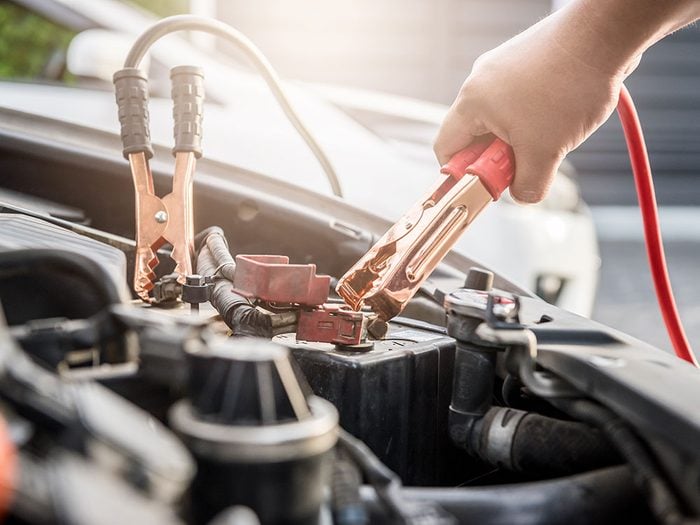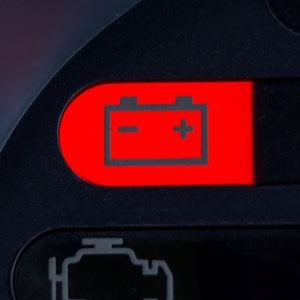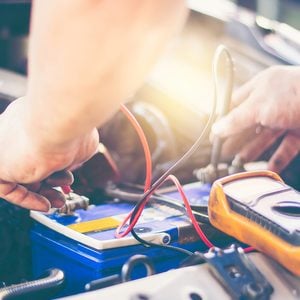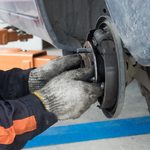How to Jump Start a Car Safely

Ever found yourself stranded with a weak or dead car battery? Learn how to jump start your car safely with these simple steps.
How to Jump Start a Car — Step by Step
Learning how to jump start a car can save you—or a fellow motorist—from being stranded on the side of the road with a dead battery. (This is how long a car battery should last.)
Jump-starting a vehicle is usually pretty simple, but it’s serious business and you have to do it right to do it safely. Every year people are seriously injured while attempting to help another driver with a “jump.” Print this article and put it in your glove box. Then, before you even connect the cables, go through these preliminary steps:
- Make sure both car batteries are the same voltage (most batteries are 12 volts) and the same polarity (both have a negative ground). You can check this information in your owner’s manual in your glove box. (Here are more things you should always keep in your glove box.)
- Pull your cars close enough to each other to connect the cables, but never let the vehicles touch. This could cause a short.
- Shut off the ignition switch, lights and accessories in both cars. Be sure the vehicles are in park or neutral and that the parking brake is set. Wear safety glasses.
- Don’t smoke. Sparks near a battery can cause an explosion.
- If the weak battery is frozen, don’t try to jump it! It could explode. You can tell if it’s frozen by looking through the inspection cap to see if the water is frozen. One or more sides of the battery case will bulge if it’s frozen.
- Make sure you can identify the positive and negative terminals of both batteries. Also be sure you’ll have enough room to clamp to the cable terminals. The positive terminal is most likely connected to the car’s starting/charging system with a red cable that has a plus sign. The negative is connected to the engine of the vehicle and usually has a minus sign.
How to Hook Up The Jumper Cables and Start The Car
- Clamp the positive (red or yellow) cable to the positive terminal of the weak battery. Make sure the other end doesn’t touch any part of the car’s engine or body or you could get a dangerous spark.
- Clamp the other end of the positive cable to the positive terminal of the good battery.
- Clamp the negative cable (black) to the negative terminal of the good battery.
- Clamp the other end of the negative cable to a clean metal part of the engine (like a bolt head or bracket) in the car with the weak battery. Keep the clamp away from the battery, any moving parts and the fuel system. Caution: Don’t attach the negative cable to the negative terminal of the weak battery! This common mistake could ignite hydrogen gas directly over the battery. Battery explosions can cause serious injury. Even if you’ve gotten away with it before, use a metallic engine part instead.
- Now start the car with the good battery, let it charge the weak battery for 5 minutes, then try to start the car with the weak battery. If it doesn’t start, shut off both ignitions, make sure the cable clamps are making good contact and then try it again. When the car with the weak battery starts, wait (about 15 seconds or so) to make sure it doesn’t stall.
- Disconnect the cables in the reverse order: First remove the negative cable from the car you jumped, then the negative cable from the car with the good battery. Then remove the positive cable from the car with the good battery (don’t touch a grounded part of either car with the clamp of the positive cable). Finally, remove the positive cable from the car with the weak battery. Remember, both engines will be running (with any luck!), so work carefully as you remove cables to avoid belts, fans and other moving parts.
Tip: If you live in a very cold climate, buy the thickest-gauge cables you can find (the lower the number, the thicker the cable).
Now that you know how to jump start a car safely, find out what these strange car noises probably mean.






